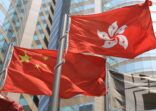The CSOP NASDAQ-100 Index Daily (2x) Leveraged Product received approval from the Securities and Futures Commission (SFC) on Monday, according to the regulator’s records.
The target issue size is $5m and it is expected to be listed on the HKEX on 15 May, according to the firm.
In September, the firm launched the CSOP NASDAQ-100 Index Daily (-2x) Inverse Product. The product has only HK$75.57m ($9.75m), which is the tenth L&I ETF in terms of assets, HKEX data shows.
“This [new] leveraged product is to pair with the [-2x] inverse product to help investors catch the two-way movements of Nasdaq index and the two-way investment opportunities brought by escalated market volatility,” a spokesman for the firm told FSA.
The spokesman said that “in the beginning few months of 2020, the market experienced extreme turmoil triggered by COVID-19 outbreak. The Nasdaq 100 Index was down around 28% within five weeks, a downturn rarely seen in history.
“Shortly after the huge sell-off, investors were optimistic about a possible turning point in the battle against Covid-19 as well as the quantitative easing policy announcement by the Fed , which fueled a Nasdaq 100 Index rebound.
“We expect market volatility to persist given the uncertainties, especially in the post-epidemic period,” he added.
Similar products?
CSOPs two L&I Nasdaq ETFs will compete with similar products from China AMC: the Direxion NASDAQ-100 Index Daily (2x) Leveraged ETF, launched in 2016 and the ChinaAMC Direxion Nasdaq-100 Daily (-2x) Inverse Product which debuted in September last year.
The CSOP spokesman said he believes his firm’s products will have an edge in terms of liquidity, tracking error and size.
In total, there are 24 L&I products in Hong Kong with cumulative assets of around HK$7.48bn, accounting for just 2.7% of Hong Kong’s ETF market, according to latest data from HKEX.
When the new CSOP product is launched on Friday, there will be 11 leveraged products listed in Hong Kong with a 2x magnifier, HKEX data shows.
L&I products, which magnify the returns or losses of a market index depending on the multiplier and market movement, are relatively new in Hong Kong. The regulator authorised them in 2016.

















